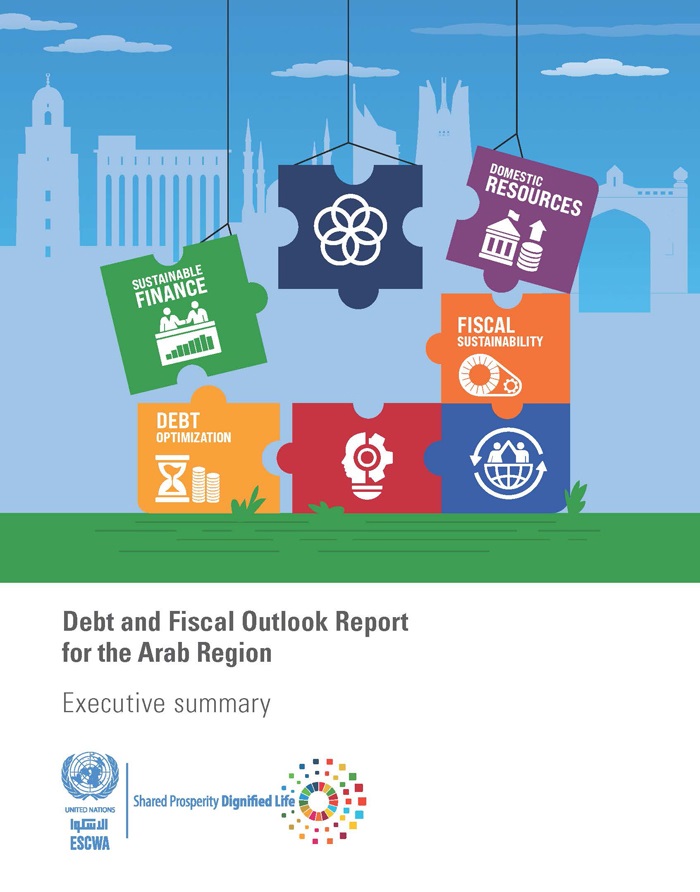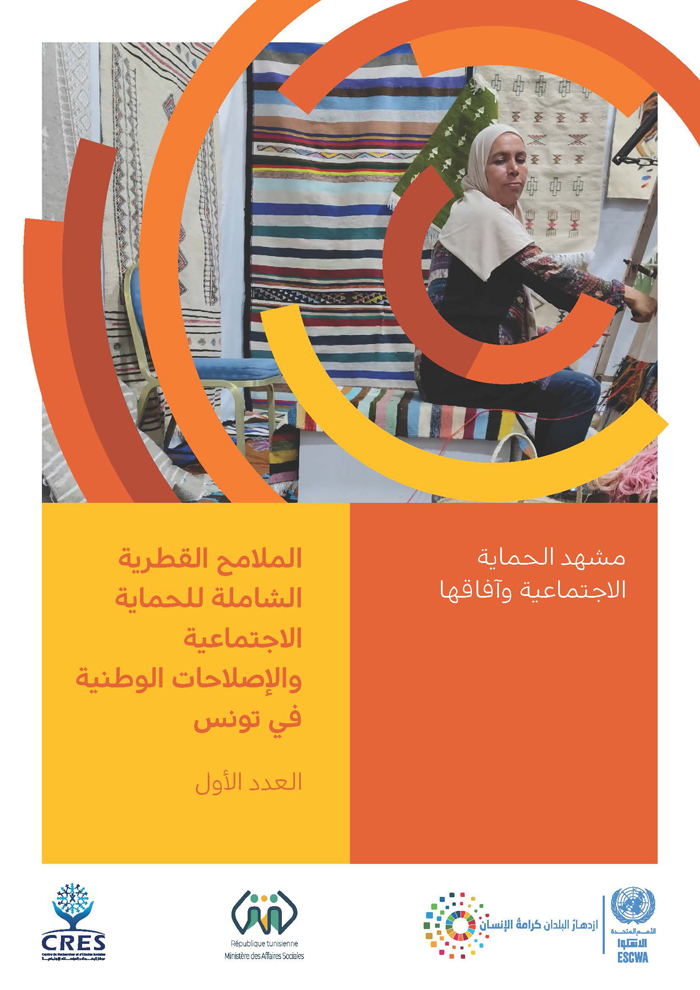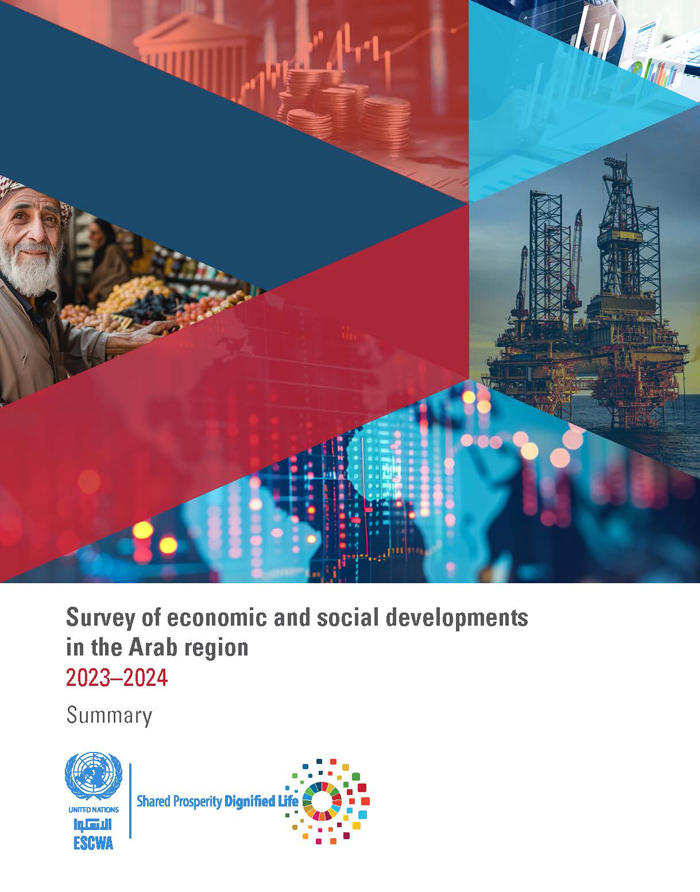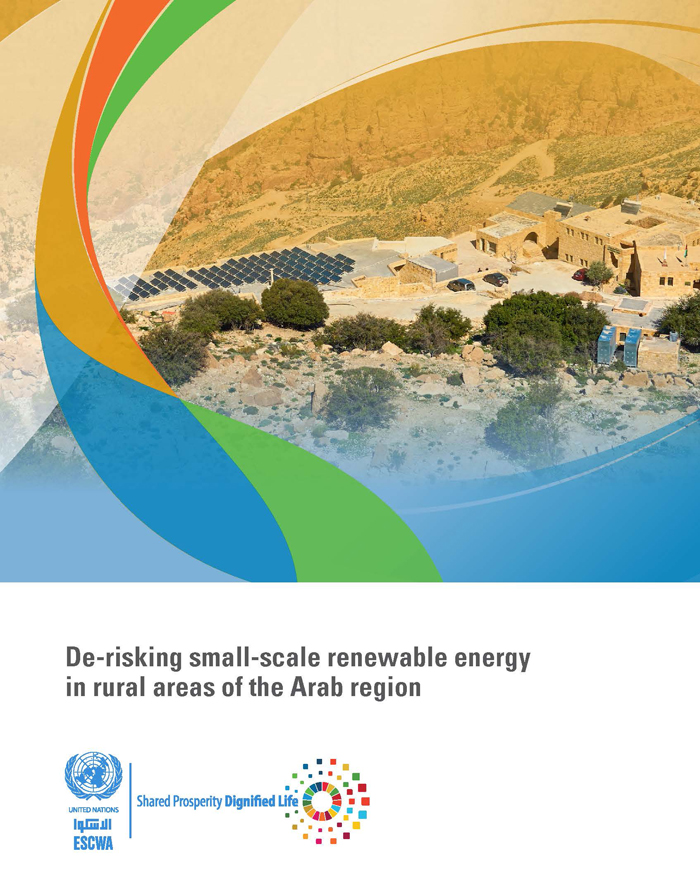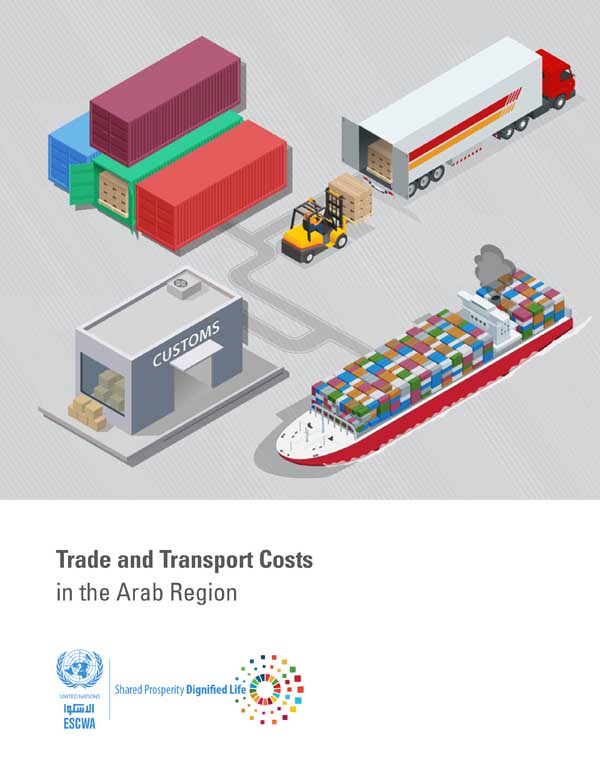
ESCWA Publication: E/ESCWA/EDID/2019/3
Country: Arab region
Publication Type: Reports & studies
Cluster: Shared Economic Prosperity
Focus Area: Financing for development, Trade & regional connectivity
Initiatives: Transport and trade connectivity
SDGs: Agenda 2030
Keywords: Competitiveness, Economic development, Logistics, Trade policy, Costs, Transport costs, Transport, Intraregional trade, Foreign trade, International trade, Competitiveness
Trade and Transport Costs in the Arab Region
January 2020
Trade costs are a major determinant of trade competitiveness and integration in regional and global economies. The Arab region has high trade costs, resulting in low trade integration at the regional and global levels. The present study investigates trade costs in the region, both at the national economy level and the sectoral level.
The results show varying trade costs between Arab countries, and between Arab countries and their trade partners. Trade costs with traditional trade partners, such as the European Union, are moderate; however, they are high with other regions. Similarly, some sectors showed better trade costs than others. Overall, trade costs in the Arab region remain an obstacle to expanding the region’s participation in international trade, and to intraregional integration. Various factors contribute to this, including transport and logistics costs. It is therefore crucial to further investigate trade costs at the country level, and focus on decomposing trade costs into their basic components.
Related content
Financing for development
, Trade & regional connectivity
,
Trade costs are a major determinant of trade competitiveness and integration in regional and global economies. The Arab region has high trade costs, resulting in low trade integration at the regional and global levels. The present study investigates trade costs in the region, both at the national economy level and the sectoral level.
The results show varying trade costs between Arab countries, and between Arab countries and their trade partners. Trade costs with traditional trade partners, such as the European Union, are moderate; however, they are high with other regions. Similarly, some sectors showed better trade costs than others. Overall, trade costs in the Arab region remain an obstacle to expanding the region’s participation in international trade, and to intraregional integration. Various factors contribute to this, including transport and logistics costs. It is therefore crucial to further investigate trade costs at the country level, and focus on decomposing trade costs into their basic components.
